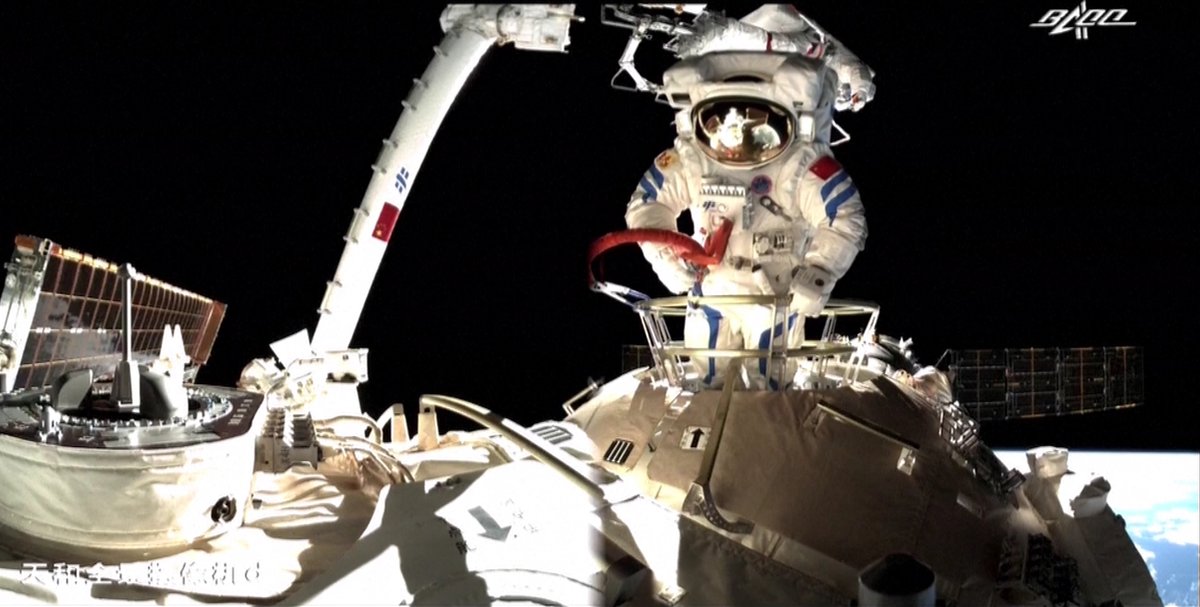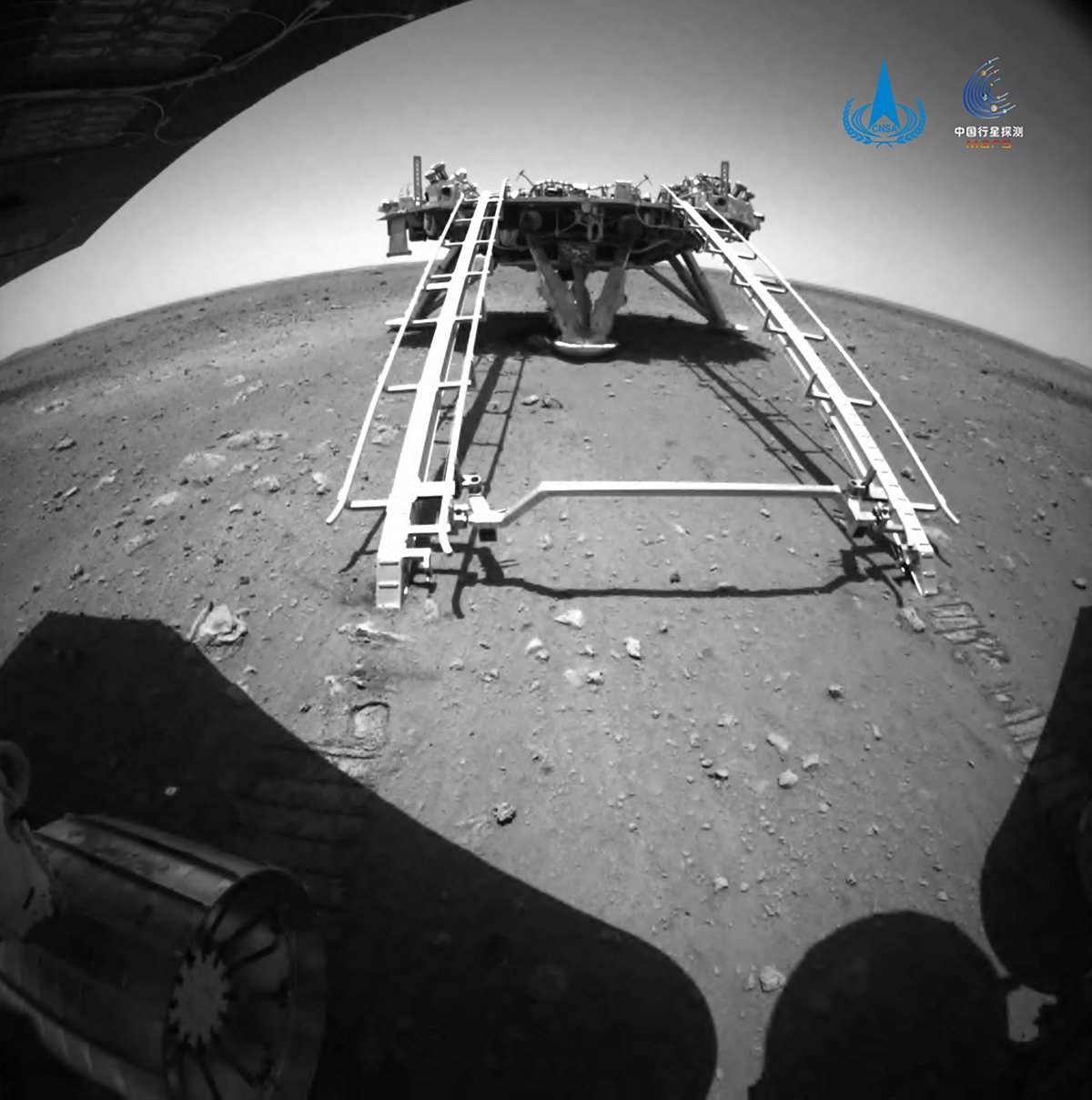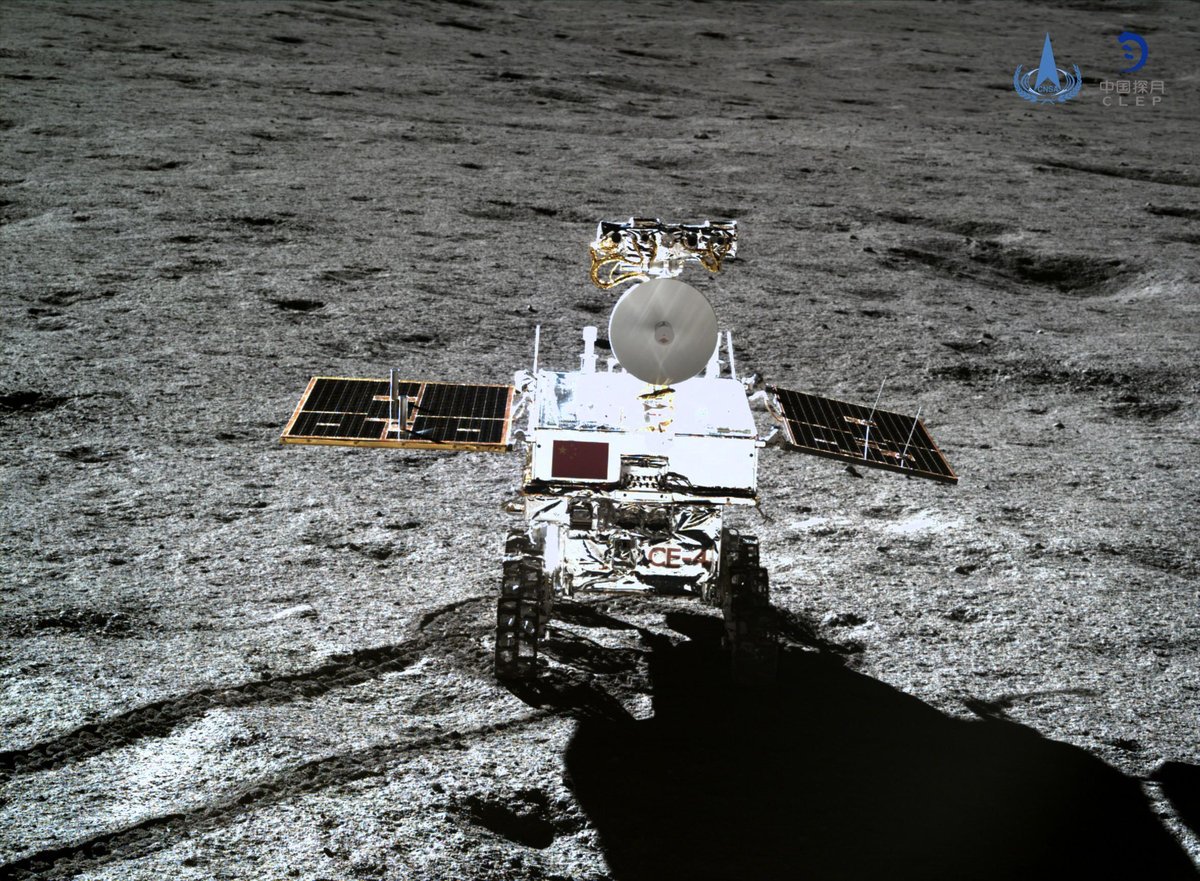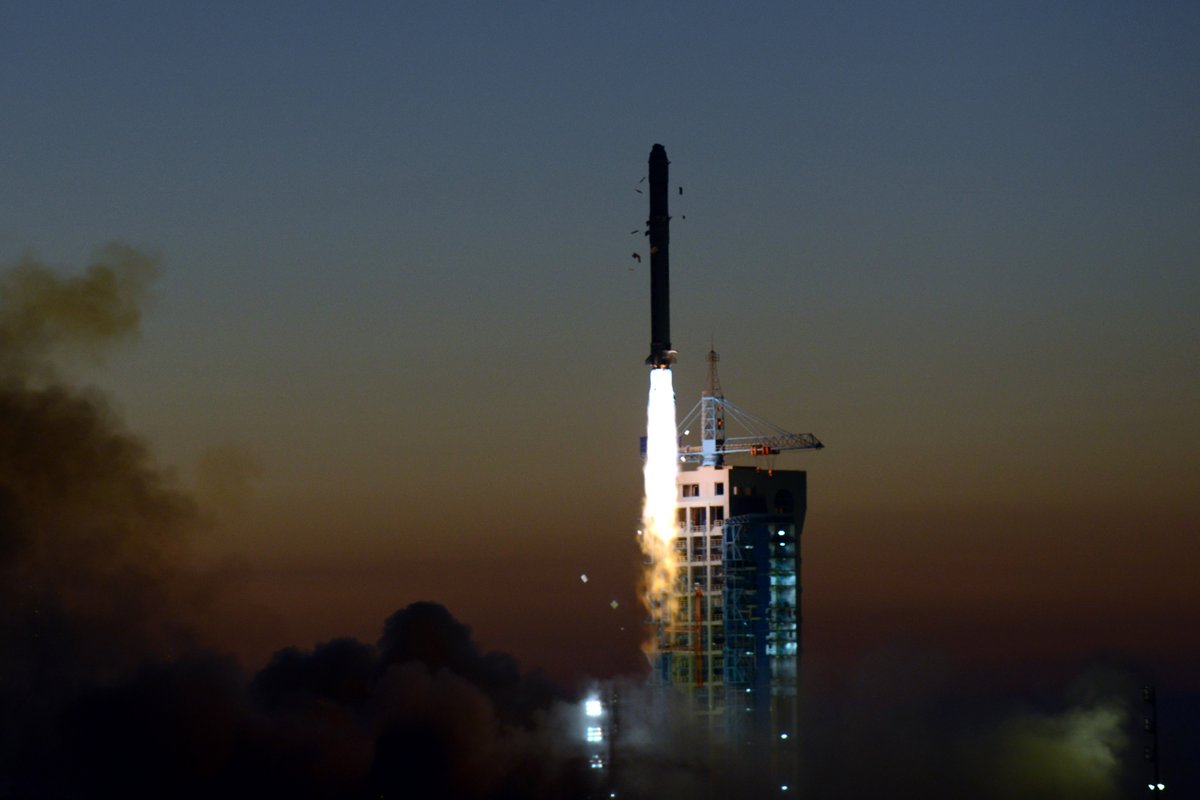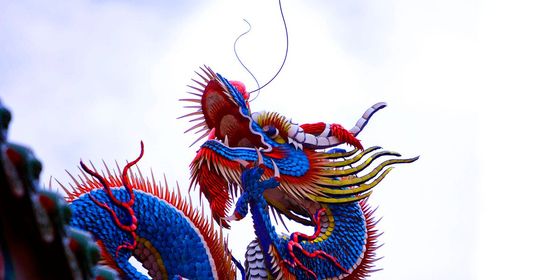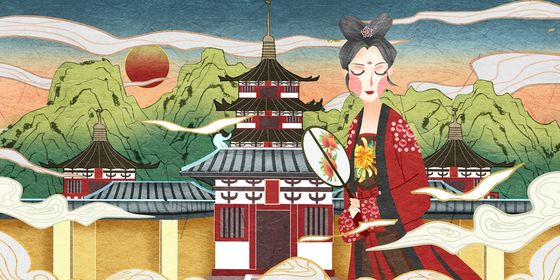How ancient legends and poems inspire the names of Chinese spacecrafts and space programs
On September 17, just in time for the lunar-themed Mid-Autumn Festival, the three members of the Shenzhou-12 mission returned safely to Earth, bringing China’s latest space mission to a successful end.
In total, the astronauts spent 92 days in space. For three months, they lived in China’s space station, the Tiangong; carried out two space walks; and performed a number of scientific experiments and technological trials.
The astronauts’ return brought attention once again to China’s space programs. If you’ve been following the country’s space ambitions, you may be familiar with the Chinese names of the missions and spacecrafts. Many of these names have rather romantic origins in space-related mythology and poetry—here are the stories behind a few:
Tiangong: The “Heavenly Palace”
The Tiangong Space Station is a successor of China’s Tiangong-1 and Tiangong-2 space laboratories, which were launched in 2011 and 2016, respectively. Currently under construction in low Earth orbit, the space station is expected to be completed by the end of 2022. In the future, it will host experiments from China as well as other countries.
In Chinese, the name of the space station, 天宫 (tiāngōng), literally means “Heavenly Palace.” In Chinese mythology, this is the home of Tian Di (天帝), the supreme god ruling the heavens. In the classic novel Journey to the West, the Tiangong is described as having a gate made of beautiful jade, through which golden beams, rainbows, and purple mist could be seen. Inside, the palace was even more splendid than the imperial palace in mortal world, with countless celestial guardians and generals standing in the heavenly court.
The heavenly palace was the very place where the Monkey King Sun Wukong, the novel's hero, raised a rebellion against the gods. This tale is known as “The Monkey King Raises Havoc in the Heavenly Palace (《大闹天宫》)”. The phrase is also a four-character idiom (chengyu) describing someone making a scene here on Earth.
Tianwen: Questioning Heaven
In 2020, China launched its mission to Mars, consisting of an orbiter and a rover. It entered the Red Planet’s orbit in February 2021, and the rover landed landed on May 14, 2021. The China National Space Administration’s Mars program is known as Tianwen, and its aim is to explore the surface and geology of Mars, as well as the planet’s magnetic field, soil composition and atmosphere.
As early as in 2016, the Space Administration held a worldwide campaign to collect suggestions for naming its planetary exploration program, and received more than 35,000 submissions. The name Tianwen (天问), meaning “Questions to Heaven,” was chosen from an online poll.
Tianwen was the name of an epic poem by Qu Yuan (屈原), a well-known politician living in the Warring States period (475 – 221 BCE). The poem is made up of 172 questions to heaven, reflecting Qu Yuan’s curiosity about nature and the universe, and his hunger for truth. Perhaps the Tianwen missions will end up answering some of Qu Yuan’s questions.
The name Tianwen was officially announced in 2020, and the Mars mission is known as Tianwen-1. The rover from the mission was named Zhurong (祝融) after the God of Fire in Chinese mythology, because Mars is translated as 火星 or “Fire Planet” in Chinese.
Chang’e: The Moon Goddess
The Chinese Lunar Exploration Program is also known as Chang’e Project. It is an ongoing series of robotic Moon missions, which includes lunar orbiters, landers, rovers, and sample-return spacecraft. In 2007, the first spacecraft of the program was launched from the Xichang Satellite Launch Center in Sichuan province, and it was named as Chang’e-1.
Chang’e (嫦娥) is the name of the goddess of the moon in Chinese folklore. She appears in many legends and is a household name. The most widely-known version of Chang’e’s story states that she was originally a beautiful human woman who married an archer named Hou Yi (后羿). At that time, there were ten suns in the sky, making everyone on Earth miserable from heat and drought. The legendary King Yao hired Hou Yi to shoot down nine suns, leaving only one in the sky.
To reward Hou Yi for saving humanity, the goddess Queen Mother of the West (西王母) gave Hou Yi an elixir of immortality, which Hou Yi entrusted to Chang’e to safekeeping. One day, when Hou Yi was out hunting, Chang’e took the elixir herself, either out of curiosity or to keep Hou Yi’ s apprentice Feng Meng (逢蒙) from stealing it. She began to fly upward to the sky, and finally settled down in the moon, where she became a goddess..
In 2013, the Lunar Exploration Program entered its second phase with the launch of the Chang’e-3 mission. The lunar rover attached to the probe is named Yutu (玉兔), or “Jade Rabbit,” after the white rabbit that is supposed to be Chang’e’s companion on the Moon .
Wukong: Comprehending Space
In December 2015, China launched its Dark Matter Particle Explorer Satellite from the Jiuquan Satellite Launch Center in Inner Mongolia. This satellite is dubbed “Wukong (悟空)” after the well-known Monkey King. According to Journey to the West, Sun Wukong possesses a pair of extremely sharp eyes known as “fiery golden eyes (火眼金睛),” which can see through solid objects and tell demons apart from humans. Accordingly, the detectors attached to the Wukong satellite are the most sensitive and accurate China has yet made, specially designed for seeking dark matter in space. Coincidentally, the characters “悟空” can also be interpreted as “comprehending space” or “comprehending the void” in Chinese.







